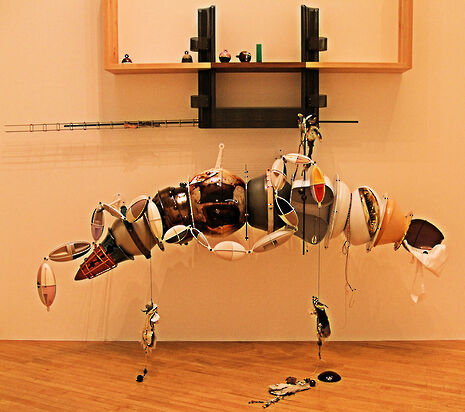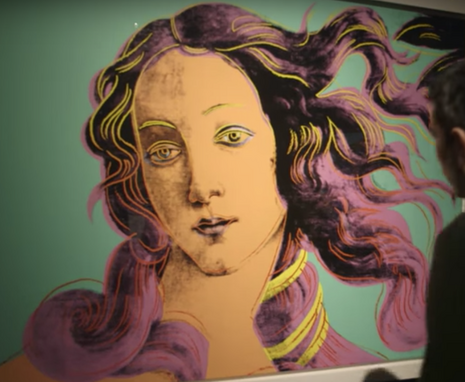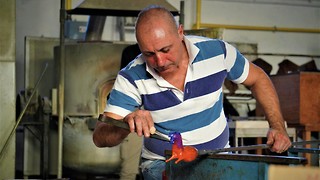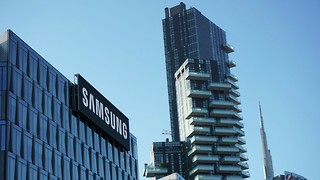‘Oxbridge arrogance’ is to blame for Gove’s Turner Prize comments
Michael Gove may see #modishcrap, but contemporary art allows us to better understand the world. The Turner Prize is right to celebrate that

Gove sent the below tweet in reference to the announcement that Helen Marten had won the Turner Prize 2016. The work wasn’t just ‘#modishcrap’ – he went on to tweet that it represents “the tragic emptiness of now”, missing the irony that those phrases would do well to describe his political (and comedy) career to date.
#Turnerprize2016 - congratulations to Helen Martin but #honestly is this = to Turner, Ruskin, even Holman Hunt - of course not #modishcrap
- Michael Gove (@michaelgove) December 5, 2016
The Prize has had a wonderfully controversial history. In 1999, Tracey Emin split the nation with her nominated ‘My Bed’ – an unmade bed, complete with condoms and blood-stained underwear. In 1995, Damien Hirst famously won with a formaldehyde shark. And in 2002, Culture Minister Kim Howells described that year’s nominated work as “cold, mechanical, conceptual bullshit”. Now, the MP for Surrey Heath has given his contribution to the debate.
Gove’s tweets seem to encapsulate what a friend of mine calls ‘Oxbridge arrogance’ – no doubt something with which Varsity readers will be familiar. The likes of DavCam, BoJo and Gove (he isn’t even politically successful enough to have his own idiotic moniker) seem to have this sense that they can give opinions on things they literally know nothing about. We may find this approach all well and good in supervisions, but in 2016 it is a dangerous game to play. This anti-expert paranoia and arrogance is dangerous when it enters into political discourse. Gove’s slip-ups betray his own intellectual ‘tragic emptiness’: he names John Ruskin as a great artist; Ruskin is remembered for his criticism, not his art. He also misspells Helen Marten’s name.
@msmirandasawyer @edvaizey @BBCNews @Tate No it doesn't - it celebrates ugliness, nihilism and narcissism - the tragic emptiness of now
- Michael Gove (@michaelgove) December 5, 2016
The panel of judges know people care about what they choose, and don’t give into conventionality because of that. The Turner Prize is an opportunity to challenge and berate people’s understanding of where the boundary of art lies. In a similar spirit, Helen Marten’s sculptures are made of everyday objects, but the eclectic nature of her materials mean that these objects become like signs, pointing playfully to different times, places and scenarios. BBC art critic Will Gompertz describes the ‘poetic puzzles’ as “intellectually rigorous” – they question how we form meaning through association of material objects. As The Guardian’s Adrian Searle put it: “In her art, thinking is made concrete.”
This year’s Turner Prize exhibits a range of the most exciting contemporary art in the world. And it’s all done by British artists. You would have thought Gove would have liked the British spin on proceedings, but no, it “celebrates ugliness, nihilism and narcissism”, according to him. Part of me thinks that his response to the works are not really based on the art at all. Rather, they are an attack on the contemporary art world, and it being characteristically ‘international’ (which in the eyes of Gove is everything which has even the slightest whiff of European) and multicultural, not to mention socially liberal and London-centric.

You’ve got to hand it to the man – he knows his audience. Besides his comments being, in my opinion, plain wrong, picking the Prize as a target smacks of his dull, little-Englander lack of journalistic originality. Maybe it’s because his wife happens to be a columnist for the Daily Mail. I would like to know the correlation between Brexiteers and people who walk around the Tate Modern saying, ‘I could have done that’. Being against all this modern art guff is just another manifestation of the frilly nostalgia for a time when England was a Constable painting and the only thing that could be wrong in the world was Hugh Bonneville not making luncheon on time.
I pity Michael Gove for hating contemporary art. It brings happiness to many because it aspires to wry irony, pulling your brain to places it’s never been (Searle calls Marten’s work “a crash course in lateral and obtuse thinking”). You can see this in the works of, say, Richard Long or Paul Klee, Tracey Emin or Francis Bacon. Contemporary art notes what has gone before, and often comments on old masterpieces, but reimagines them for the 21st century. Bacon famously did this with Velázquez, Duchamp with da Vinci, and Warhol with Botticelli. Explaining Helen Marten’s sculptures to the masses, Gompertz suggests: “Think Professor Branestawm meets Heath Robinson meets James Joyce, with a dose of Duchamp and Fischli & Weiss thrown in for good measure.”
Far from being arrogant, attention-seeking money-swindlers, creating works which waste our time (and their own), modern artists in fact give us the time and space in their works to explore emotions and concepts which our hectic lives wouldn’t otherwise facilitate. To experience this, you could do a lot worse than the Mark Rothko room at the Tate Modern. More practically, check out last year’s Turner Prize winners: a group of architects, Assemble, with a focus on community-led development projects in Liverpool.
Surely this is the opposite of Gove’s accusations of arrogance and nihilism? Contemporary art suffers from what people expect from Art – the meaning of life, riffing on the human condition – and the Turner Prize can supply that in bags. But the Prize also challenges what we consider to be art – just look at the furore last year when the prize was given to architects. It unfailingly achieves something that Gove never will – self-reflective creativity, an intelligent sense of humour, internationalism and above all, good taste
 Comment / The (Dys)functions of student politics at Cambridge19 January 2026
Comment / The (Dys)functions of student politics at Cambridge19 January 2026 News / Local business in trademark battle with Uni over use of ‘Cambridge’17 January 2026
News / Local business in trademark battle with Uni over use of ‘Cambridge’17 January 2026 Features / Exploring Cambridge’s past, present, and future18 January 2026
Features / Exploring Cambridge’s past, present, and future18 January 2026 News / Your Party protesters rally against US action in Venezuela19 January 2026
News / Your Party protesters rally against US action in Venezuela19 January 2026 Lifestyle / Seoul food19 January 2026
Lifestyle / Seoul food19 January 2026






